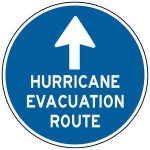 Stay Hurricane Ready – Tampa, St. Pete – Tips for Tropical Weather Planning
Stay Hurricane Ready – Tampa, St. Pete – Tips for Tropical Weather Planning
As we’ve already been reminded, tropical storms and hurricanes are a fact of life during Florida’s summer months. Technically, the hurricane season runs from June 1 through the end of October, but we’ve had some doozies as late as November, so stay tuned into the tropical weather forecast at least until after Thanksgiving.
Here in the Tampa-St. Petersburg area, we’re susceptible to coastal flooding, storm surges, heavy wind and rain, all as a result of tropical weather getting a bit too close, or even right on our doorstep. Following are some guidelines to keep in mind to keep yourself, your family, your home and your belongings as protected as possible in case a tropical storm or hurricane strikes…
- Stay informed about the weather. Be a weather watcher. If you know there’s a disturbance in the Atlantic, the Gulf of Mexico or the Caribbean, keep up-to-date as to the storm’s location and movement. Battery operated weather radios are inexpensive and reliable.
- Be Prepared – Put together a basic disaster supplies kit and store it in a location that will be readily accessible if needed.
- Develop an Emergency Plan. Know exactly what you’ll do in case you need to ride the storm out at home and especially if you’re ordered to evacuate. Evacuation orders should be taken very seriously. Know where you’ll go, or know where your closest emergency shelter is located and how to get there. Keep in mind that you’ll only be able to bring bare necessities, and pets are not allowed. Owners should make plans in advance for the care of their pets.
- Know your evacuation route(s). Most communities on the west coast of Florida have established evacuation routes identified by signs along roadways. Be sure to know your route and even practice it if you’re not familiar with certain streets or highways. Check with your local municipality if you’re unsure as to what route to take to safety.
- Prepare yourself. If you have health requirements that might be interrupted by a storm or the need to evacuate for any length of time, plan in advance for what you need, and have the necessary medications and equipment on hand and ready to take with you when you leave your home.
- Leave immediately. This cannot be stressed too strongly. Once the order to evacuate has been given, get out. Time is of the essence. Roadways may become clogged with traffic, and as the storm draws nearer, they may be blocked by water and debris. Leave immediately if ordered!
- Be risk aware. Obviously, tropical storms and hurricanes are dangerous and should be taken very seriously. Don’t be fooled that all is clear when the calmness of the eye of the storm passes over. Once the eye passes, winds may change direction and may quickly return to hurricane force. Be on the watch for tornadoes; they often accompany hurricanes and can be deadly.
- Be patient. Wait until your local authorities tell you it’s OK and safe to return to your home. Hidden risks may pose a threat to you and your family’s welfare if you return too soon. Keep in mind that recovering from a major storm is a gradual process that takes time. There can be safety issues to resolve as well as physical and emotional issues that need to be addressed when coping with a disaster. Take advantage of assistance offered by your local municipality, FEMA (Federal Emergency Management Administration), local fire and police, the Red Cross and other organizations.








